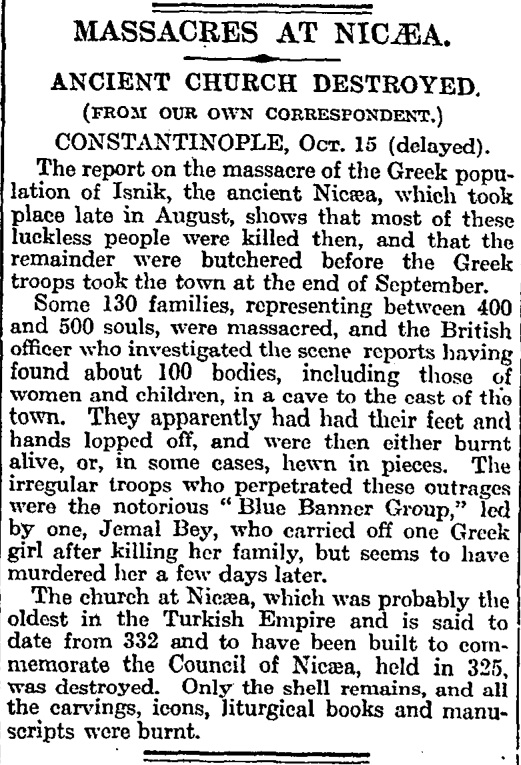
MASSACRES AT NICAEA
ANCIENT CHURCH DESTROYED
The London Times.
October 19, 1920, p.12.
(FROM OUR CORRESPONDENT)
CONSTANTINOPLE, Oct. 15 (delayed).
The report on the massacre of the Greek popu-
lation of Isnik, the ancient Nicaea, which took
place late in August, shows that most of these
luckless people were killed then, and that the
remainder were butchered before the Greek
troops took the town at the end of September.
Some 130 families, representing between 400
and 500 souls, were massacred, and the British
officer who investigated the scene reports having
found about 100 bodies, including those of
women and children, in a cave to the east of the
town. They apparently had had their feet and
hands lopped off, and were then either burnt
alive, or , in some cases, hewn in pieces. The
irregular troops who perpetrated these outrages
were the notoroous "Blue Banner Group" led
by one, Jemal Bey, who carried off one Greek
girl after killing her family, but seems to have
murdered her a few days later.
The church at Nicaea, which was probably the
oldest in the Turkish Empire and is said to
date from 332 and to have been built to com-
memorate the Council of Nicaea, held in 325,
was destroyed. Only the shell remains, and all
the carvings, icons, liturgical books and manu-
scripts were burnt.



